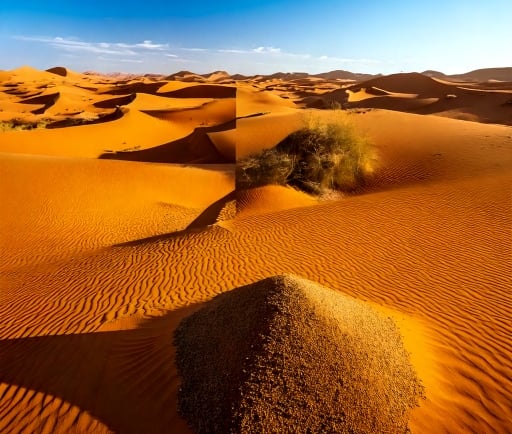The Varieties of Sand in the Sahara Desert


The Unique Composition of Sahara Desert Sand
The Sahara Desert, the largest hot desert in the world, is renowned not only for its vastness but also for its diverse array of sand types. This diversity arises primarily from differences in mineral composition and the processes of wind erosion that shape the desert landscape. Mineral composition has a significant impact on the color, texture, and properties of the sand, resulting in an astonishing variety of sand compositions across various regions of the Sahara.
Mineral Varieties and Their Impact on Sand Color
In the Sahara, sand's color is influenced greatly by its mineral content. For example, sands high in quartz are typically light-colored, contributing to the bright appearance of many sandy areas. Conversely, sands that contain iron oxides may exhibit hues of red and orange, adding to the mesmerizing sight of the shifting dunes. Likewise, volcanic sands, which might be found near the northern edges of the desert, can have darker shades due to their unique mineral compositions. Each variety of sand tells a story of geological history, reflecting the area's evolution over millions of years.
Wind Erosion: Shaping the Desert Landscape
Wind erosion plays a crucial role in transforming the landscape and the sand itself. As winds sweep across the desert, they carry particles of sand in a process known as deflation. This not only shifts the grains but also leads to the rounding of sand particles as they collide with one another. The action of wind can create remarkably fine sands in some areas, while in others, it can result in coarser textures. Through countless repetitions of this process, specific types of sand gain prominence, leading to the distinctive characteristics observed in different parts of the Sahara.
Understanding the different varieties of sand in the Sahara Desert allows us to appreciate not just the immediate beauty of its dunes but also the intricate geological processes that birthed them. The interplay of mineral composition and wind erosion provides insights into the ecological and climatic history of this vast region. Hence, when one wanders through the stunning sands of the Sahara, they tread upon not only grains of countless colors and textures but also the remnants of a storied past, shaped by natural forces over eons.
